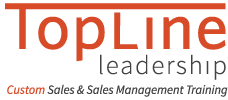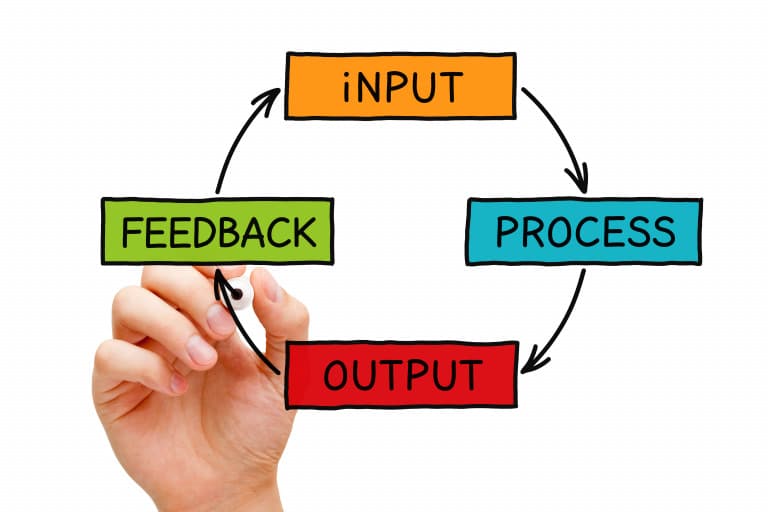Every month you and your salespeople get judged and paid on sales results. So having a sales team culture focused on results is healthy and necessary.
But one of the most important messages I try to imprint on my clients is that there is a huge difference between monitoring results and improving results.
Imagine a sports coach who only paid attention to the final score. That information doesn’t help them identify what the players are doing right or wrong, and what they need to do to improve.
If you are truly a results-oriented sales manager, you have to pay attention to the inputs that produce the results. Here are two tips to help you improve team results.
- Coach early in the sales cycle
No sports coach would wait until the game is in its final minutes before coaching their players. But many sales managers take that approach all the time: they don’t offer advice or intervene in a deal until the sales opportunity is nearing the close.
The plain truth is you can’t improve closing ratios by going in at the end of the sales process. You have to fix what your salespeople are doing at the very beginning—what they are doing to understand the customer’s buying process. Those first few meetings between a salesperson and prospect are when the prospect decides whether they have a problem that your offerings can fix and whether it’s worth their time to fix it. It’s also where, from the customer’s perspective, the size of the sale is determined. If you don’t get your salespeople to probe those issues, no amount of finesse at the end stages is going to secure a deal for you.
If you need to do more early-cycle sales coaching, start by reviewing new deals or opportunities with your salespeople and asking them questions such as:
Ӣ What problems has this customer told you they have that you think we can solve?
Ӣ What is causing these problems to happen?
Ӣ What are the costs to your prospect if they delay a decision?
”¢ What decision makers are involved? How many of them have you talked to directly? Which one will make the final call? What’s your strategy for reaching additional decisions makers?
Ӣ Have you identified at least 7 buying criteria for each of the decision makers? Which of the criteria represent a strength for us? Which is a threat (because our competition is stronger)?
If your salespeople cannot answer these early-sales-cycle coaching questions, they are not doing a good job of identifying customer needs and priorities, nor of understanding the customer’s decision making process. And that spells trouble later in the sales cycle.
2. Evaluate the quality (not just quantity) of a salesperson’s work
Most sales organizations are great at measuring how much activity a salesperson produces, but not the quality of that work. A golf scorecard is a helpful analogy here: it gives you a good approximation of how many swings the golfer took (not counting any misses!), but doesn’t tell you how far each ball went, whether it went straight down the fairway or skewed to one side, or really anything about what the golfer did correctly or incorrectly.
Yes, sometimes poor results can be come from a low activity level (such as not enough prospecting), so the advice “make more calls” can make sense in some cases. But wouldn’t you rather have a salesperson make 10 high quality sales calls than 50 calls that were a waste of time?
Here are some tips for evaluating the quality of your salespeople’s efforts:
”¢Â Develop a detailed description of your sales best practices. Examine each phase of your selling process and describe the best possible way to maximize success in each phase. Examples include: # of sales opportunities where there’s evidence that the prospect moved forward in their decision-process, X-number of meetings with new prospects, articulating the strengths of your company’s offerings, positioning your offerings against the likely competition, and so on. (I call this description of sales best practices a Success Profile.)
Ӣ Review the Success Profile with your salespeople to make sure they understand how to excel in their profession. Focus your education and training on these sales best practices.
Ӣ Do regular ride-alongs (or listen-alongs). Go with your salesperson on sales calls or listen in on their sales calls and evaluate them against the Success Profile. What do they do well? What needs work?
Focusing on IMPROVING results
Sales managers that I meet are all results-oriented people. The trick is being one who knows how to IMPROVE team results. Doing that means paying attention not just to a sales rep’s production but also to the factors or inputs that produce the results: training, attitudes, behaviors, skills, and so on.
If you’re not coaching early in the sales cycle and don’t know how to evaluate the quality of someone’s work, then you have some work to do on yourself so you can help your team improve its sales results.
For more tips on how to improve the results of your sales team download my checklist “Creating Measurable Stretch Goals.”
In this checklist you will learn what it takes to create measureable goals


